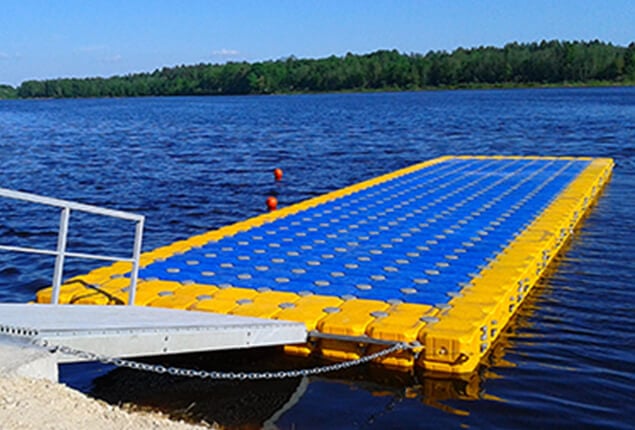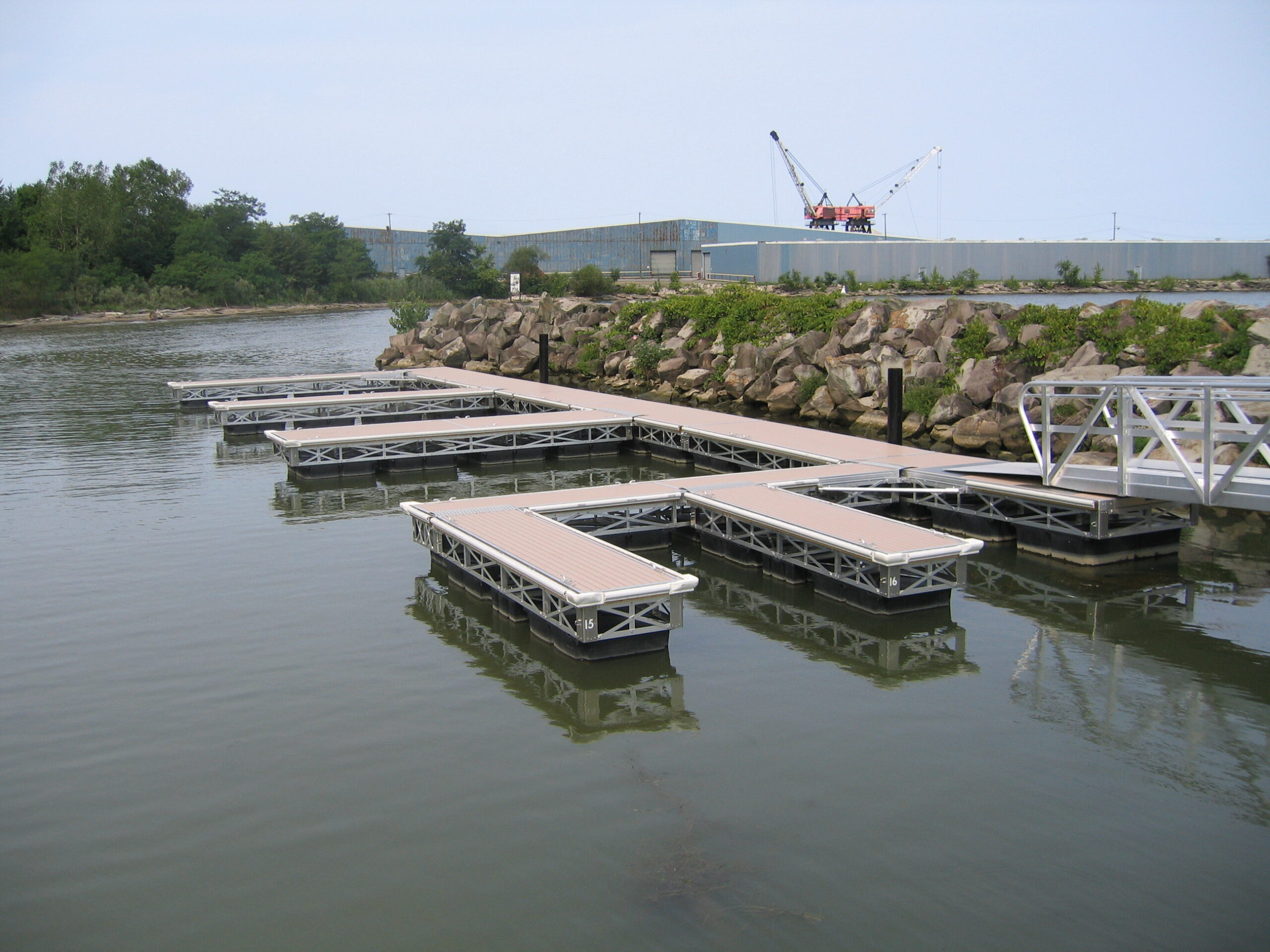Browsing the Options: Picking the Right Dock Company for Your Floating Dock Job
Browsing the Options: Picking the Right Dock Company for Your Floating Dock Job
Blog Article
Produce the Perfect Docking Option With Floating Docks
Floating docks present a versatile service for a variety of maritime needs, adapting perfectly to varying water levels and diverse vessel kinds. Their modular nature permits fast setup and moving, yet the option of proper products and layout attributes is critical for guaranteeing both functionality and visual allure. As we check out the vital aspects that add to the effectiveness of floating docks, several vital variables pertaining to security and maintenance will emerge, questioning regarding how to maximize your docking experience. The succeeding discussion will illuminate these vital factors to consider.

Advantages of Floating Docks
Floating docks deal numerous benefits that make them an optimal option for numerous maritime applications. Among the main benefits is their versatility to altering water levels. Unlike taken care of docks, floating docks fluctuate with the trend, ensuring constant availability for vessels. This attribute is specifically important in areas susceptible to considerable tidal changes or seasonal water degree adjustments.
In addition, floating docks are commonly less complicated and quicker to set up compared to traditional set structures. Their modular layout enables uncomplicated assembly and disassembly, facilitating maintenance and relocation when essential. This flexibility is specifically beneficial for momentary applications or in settings where conditions might transform.
Floating docks additionally tend to be much more ecologically friendly, as they lessen interruption to the seabed and bordering aquatic ecosystems. Their resilient nature reduces the threat of damage to aquatic life, promoting a much healthier environment. These docks can be personalized to fit numerous vessel sizes, making sure that they fulfill particular functional demands.
Ultimately, the combination of flexibility, ease of installment, and ecological considerations makes floating docks a very efficient service for a vast array of maritime requirements.
Choosing the Right Materials
Selecting the ideal products for floating docks is vital to guarantee security, longevity, and longevity. The selection of products straight influences the dock's efficiency in different ecological conditions, including exposure to water, sunlight, and possible wear from aquatic traffic.
Usual products made use of for floating docks include aluminum, timber, and high-density polyethylene (HDPE) Light weight aluminum is light-weight, corrosion-resistant, and needs minimal maintenance, making it an excellent choice for long life. Nonetheless, its preliminary price can be greater contrasted to other materials.
Wood, while aesthetically enticing and giving a typical appearance, can be prone to rot and bug damages if not correctly treated. Therefore, making use of pressure-treated timber or naturally sturdy types like cedar or redwood can reduce these issues.
HDPE is a popular selection due to its resistance to UV rays and chemicals, in addition to being eco-friendly. floating dock services. It is lightweight and readily available in different colors, permitting personalization
Ultimately, the ideal product option will rely on particular needs, including spending plan, preferred aesthetic appeals, and ecological considerations. Mindful assessment of these variables will lead to a effective and resilient floating dock service.
Style Considerations for Security
When designing floating docks, ensuring stability is a basic facet that can dramatically affect their functionality and security. Stability in floating dock design is influenced by various elements, including buoyancy, weight distribution, and the arrangement of components.
Weight distribution is essential; uniformly distributing loads across the dock prevents tilting and boosts security. This can be accomplished with calculated placement of docking equipment, such as cleats and fenders, along with correct spacing of More Info drifts. Furthermore, the dimensions of the dock need to be thoughtfully prepared. Larger styles can supply boosted stability, particularly in rough water conditions, while longer docks may require additional assistances to avoid drooping.
An additional crucial consideration is the ecological impact, consisting of wave action and wind. Incorporating functions such as sidewalls or skirting can assist minimize the effects of ecological forces, keeping stability in damaging conditions. Inevitably, a combination of thoughtful layout, material selection, and understanding of ecological factors will certainly yield a drifting dock that meets both stability and safety and security demands.
Installation Tips and Methods

Next, safeguard the necessary authorizations and stick to neighborhood laws, which might determine setup techniques and environmental considerations. If required, involve a certified specialist experienced in floating dock setups. Use top quality materials designed for aquatic atmospheres to enhance durability and long life.
When positioning the dock, align it alongside the shoreline to facilitate very easy gain access to. Guarantee that the anchoring system is robust, using cinder block or helical anchors to maintain the dock against wind and wave activity. It's vital to account for seasonal water degree fluctuations, consisting of prospective ice movement in chillier climates.
During the installment, verify the dock's floatation and stability prior to completing the anchoring. Frequently inspect the installment for any indicators of wear or damage. By adhering to these methods and tips, you can accomplish a secure, practical, and aesthetically pleasing floating dock installation that satisfies your demands.
Maintenance and Care Standards
Caring and maintaining for floating docks is critical to prolonging their life expectancy and making certain secure usage. Regular assessments should be conducted to determine any kind of signs of wear, damage, or marine development. Seek fractures, loosened installations, or blemished locations on the dock's surface area, as these concerns can endanger architectural honesty.
Cleansing is essential. Use a pressure washer to remove algae, barnacles, and debris, which can accumulate over time. For stubborn development, take into consideration eco-friendly cleaner that won't harm water life.
In addition, examine the mooring lines and anchors often to guarantee they are totally free and protected from corrosion. Change any type of frayed or damaged lines quickly to maintain security.
Throughout extreme weather, such as tornados or freezing problems, take precautionary measures. Safeguard the dock important link with extra mooring lines and, if possible, remove any kind of removable elements to stop damage.
Verdict
In conclusion, the application of floating docks provides a efficient and flexible docking remedy suitable for numerous maritime applications. With proper setup and regular upkeep, floating docks can offer reliable why not try these out and dependable docking experiences for a vast range of vessels.
As we explore the crucial elements that contribute to the efficiency of floating docks, several essential aspects pertaining to stability and maintenance will emerge, elevating inquiries about how to enhance your docking experience. Unlike dealt with docks, floating docks rise and autumn with the trend, ensuring consistent availability for vessels.When designing floating docks, making certain stability is an essential element that can substantially impact their performance and security. Security in floating dock design is affected by different aspects, consisting of buoyancy, weight circulation, and the plan of elements. Eventually, a combination of thoughtful design, material selection, and understanding of ecological variables will certainly generate a drifting dock that satisfies both stability and safety and security requirements.
Report this page